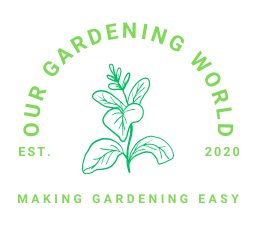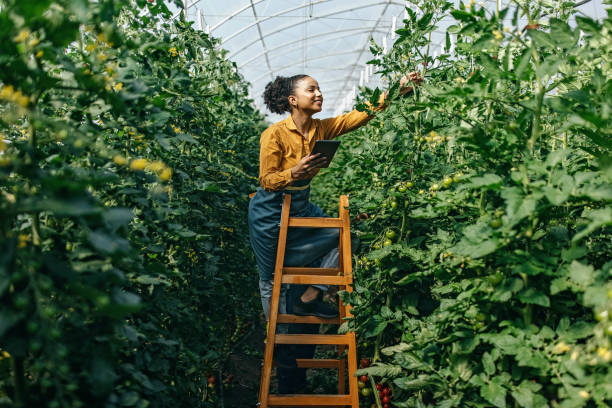The Green Thumb’s Guide: 5 Essential Gardening Tips for Growing Tomatoes
Let’s be real; there’s nothing quite as rewarding as enjoying fresh, home-grown tomatoes straight from your garden. If you’re a beginner looking to dive into the world of gardening, then you’ve come to the right place! This beginner’s guide is about helping you achieve tomato-growing success with five straightforward, no-fuss tips.
1. Taking The First Step: Selecting The Perfect Tomato Variety
Embarking on your tomato-growing journey begins with what may seem like a simple task – choosing the right variety of tomatoes that suits you and your garden.
Now, you might initially brush off this decision as inconsequential, but let’s be clear, this choice plays a pivotal role in the success of your tomato-growing endeavor!
Understanding that different types of tomatoes thrive under distinct growing conditions is essential. While some tomato varieties revel in the warm embrace of a hot, sunny climate, others prefer the gentler touch of cooler conditions.
Your garden’s climate and location significantly influence the suitability of a tomato variety, so it’s essential to align your choice with the conditions you can provide.
However, it’s not just about the plant’s needs. Your preferences matter, too. The variety of tomatoes you pick also dictates the size and abundance of the fruit.
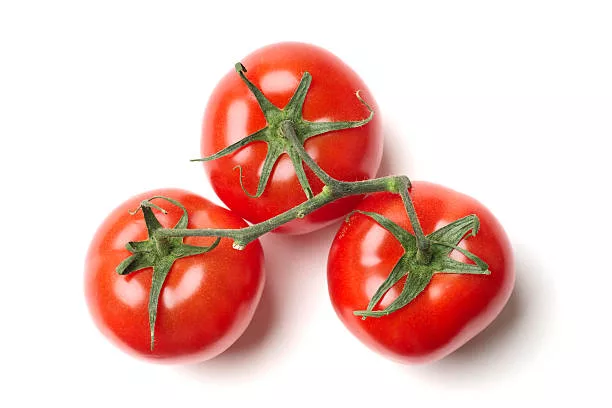
From bite-sized cherry tomatoes to the substantial beefsteak, the range is vast, so consider what type of tomato you’d love to see flourishing in your garden.
Are you a beginner looking to get your feet wet in tomato gardening? Cherry and grape tomatoes might be your perfect match.
Renowned for their hardiness and ease of management, these varieties can withstand some gardening mishaps and thrive. Plus, they produce an ongoing supply of tasty, bite-sized fruits, making them a gratifying choice for novice gardeners.
On the other hand, if you’re the type who enjoys a good challenge and is ready to invest a little more time and care, beefsteak tomatoes can be an exciting choice.
These big boys of the tomato world require more attention than their smaller counterparts. But when you finally slice into your first home-grown, juicy beefsteak tomato, you’ll realize the additional care was a small price to pay for such a fantastic reward.
In a nutshell, choosing the right tomato variety is a blend of understanding the conditions you can offer, assessing your own gardening skills, and considering your personal preferences.
With these factors in mind, you’re well on your way to making a decision that will set a solid foundation for your tomato-growing journey!
2. The Ideal Spot: Balancing Sunlight and Soil Drainage
Tomatoes aren’t just your average garden plant; they’re bonafide sun-worshippers. They crave plenty of sunlight and thrive when basking in a good six to eight hours of full sun each day. Therefore, choosing a spot in your garden that’s a veritable sun trap is essential.
Why, you ask? Well, sunlight doesn’t just aid in the overall growth of your tomato plants; it also works behind the scenes to enhance the depth and sweetness of their flavor. Yes, the secret behind those deliciously tangy tomatoes is a generous dose of sunshine!
However sunlight is a major player in the tomato-growing game, but it’s not the only factor to consider when selecting your garden plot.
Good soil drainage is another crucial element that must be considered. Your soon-to-be tomato plants would much rather avoid sitting in waterlogged soil. You see, overly damp conditions can lead to many troublesome issues, like the dreaded root rot, which can potentially sabotage your tomato-growing success.
So, how can you ensure your soil has the right drainage? If you’re planting directly in the ground, take some time to assess the quality of your soil.
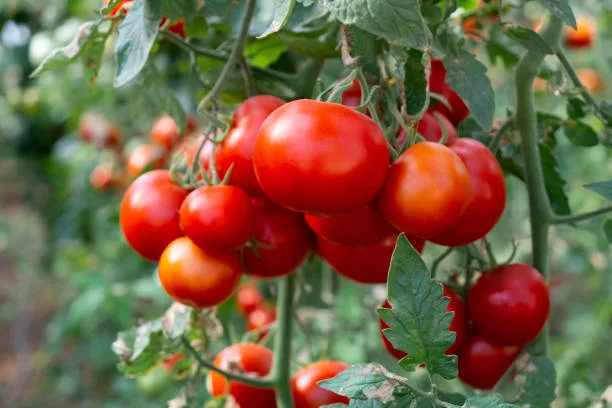
A simple test involves digging a hole, filling it with water, and observing how long it takes for the water to drain. If it takes longer than an hour, you might need to amend your soil with organic matter, like compost, to improve its structure and drainage.
If you opt for container gardening, the principles are the same, but the execution is a tad simpler. When growing tomatoes in pots, just ensure sufficient drainage holes are at the bottom of the container. If you find your chosen pot needs more, be bold and add a few more. Trust me; your tomatoes will thank you for it.
To wrap it up, finding the perfect spot for your tomato plants is a delicate balance between a sun-soaked location and well-draining soil.
So, take some time to observe your garden, examine your soil, and pick the most suitable spot for your tomato-growing adventure!
3. From Seed to Seedling: Mastering the Art of Tomato Planting
Okay, so you’ve carefully chosen your perfect tomato variety and found that sunny, well-drained spot in your garden. What’s the next step on this tomato-growing journey? It’s time to roll up your sleeves, dig in, and start planting!
Planting tomatoes isn’t just about digging a hole and dropping in a seed or seedling.
There’s a technique to it that can make a substantial difference in how well your plants thrive. A crucial tip that seasoned tomato growers swear by is planting your tomatoes deeply. We’re talking about submerging about two-thirds of the plant underground.
It might seem counterintuitive to bury so much of your precious tomato plant, but there’s a method to the madness.
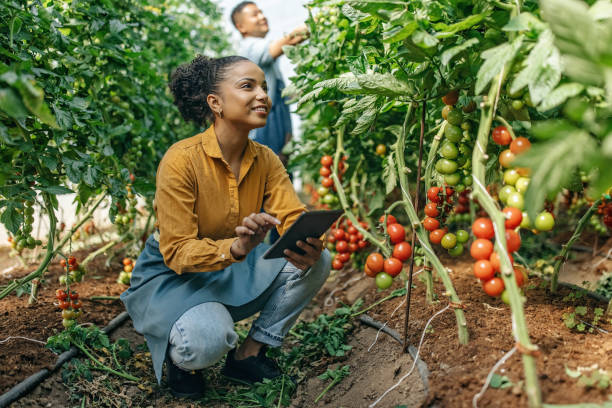
Tomato plants have the ability to grow roots from their buried stems, so the more stem you plant underground, the more roots your plant can grow. More roots translate into a stronger root system, creating a robust, stable, resilient plant. So, don’t hold back; plant those tomatoes deep!
Alongside deep planting, appropriate spacing of your tomato plants is another vital aspect that deserves attention. Tomatoes are social, but they’re also fond of their personal space. They need plenty of room for air circulation, which helps prevent many common fungal diseases, and for their growth because these plants can get quite big.
So how much space are we talking about? As a rule of thumb, aim to space your tomato plants around 24 to 36 inches apart. This might seem like a considerable gap, especially when your plants are small. But trust me, once those plants start growing, they’ll appreciate the extra elbow room.
Planting tomatoes might seem like a simple task, but it’s these small details – like deep planting and proper spacing – that can significantly influence your success. So, put these tips into practice, and you’ll be well on your way to a thriving tomato garden!
4. Quenching the Thirst, Sating the Hunger: Watering and Feeding Your Tomato Plants
Tomatoes, with their juicy fruits and vigorous growth, are high maintenance. These plants have a hearty appetite and a serious thirst. Regular, proper watering and feeding are crucial to keeping your tomato plants happy and productive.
When it comes to watering tomatoes, it’s not about a daily sprinkle. Tomatoes prefer a deep, thorough soak less frequently rather than a shallow, daily dose. Think of it like a feast instead of snacking. This kind of watering encourages the roots to delve deep into the soil in search of moisture, leading to the development of a strong, widespread root system. And the bonus? A robust root system gives birth to a more stable, resilient plant that can withstand drought conditions and flourish.
Now, while frequency matters, so does timing. The best time to water your tomatoes is early in the morning, which allows the water to penetrate the soil before the sun’s heat causes evaporation. It also ensures the foliage is dry by nightfall, reducing the chances of fungal diseases.
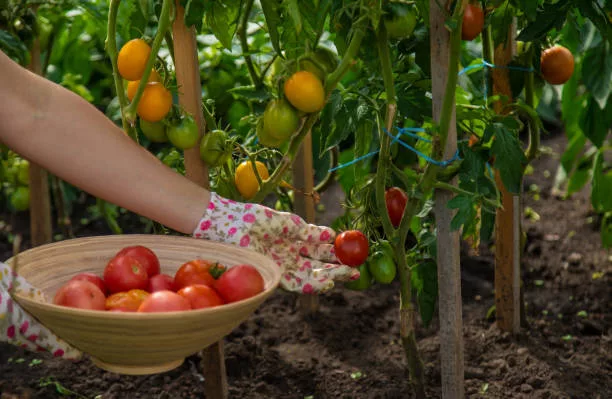
Feeding your tomato plants is equally important. Tomatoes aren’t just hungry for any food – they crave a balanced, tomato-specific fertilizer. These fertilizers are designed to provide all the necessary nutrients that tomatoes need for their growth and fruit production.
One element that tomatoes are particularly fond of is phosphorus. This nutrient plays a significant role in root development and fruit formation. You can determine the phosphorus content of a fertilizer by checking the N-P-K ratio (Nitrogen-Phosphorus-Potassium) on the bag. The middle number represents phosphorus, so the higher it is, the better it will be for your tomatoes.
Watering and feeding your tomato plants might seem like basic tasks, but the nuances in these practices can elevate your tomato-growing success. Deep, infrequent watering paired with balanced, phosphorus-rich feeding – that’s the winning recipe for thriving, fruit-laden tomato plants!
5. Guardians of the Garden: Fending Off Pests and Diseases
Just like any gardening venture, growing tomatoes has its challenges. While you’ve been nurturing your tomato plants, there’s a good chance that some unwanted guests, like aphids and diseases like tomato blight, have also been eyeing them.
But fear not; as a vigilant gardener, you have the power to protect your tomato plants from these threats. Regular inspection and early intervention are the key to maintaining a healthy, productive tomato garden.
Make it a habit to stroll through your tomato patch often, scrutinizing the leaves, stems, and fruits of your plants. Search for signs of pests, like tiny bugs, discoloration, or unusual spots, and signs of disease, such as wilted leaves or blackened stems. This regular check-up routine is your first line of defense against pest and disease invasions.
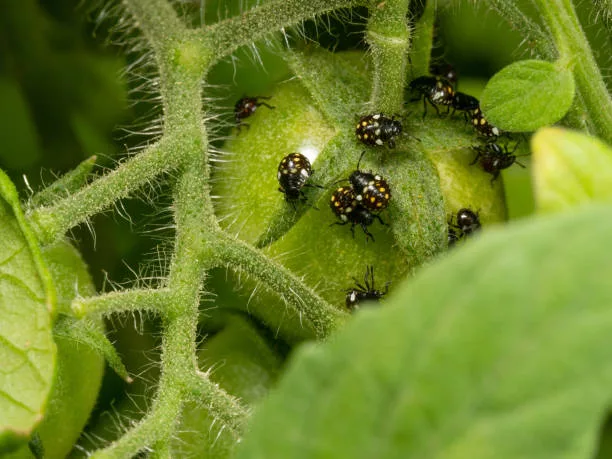
Prompt action is essential if you notice something amiss, like an affected leaf or a plant that seems under the weather. Remove any diseased or infested leaves to prevent the problem from spreading. Depending on the issue, you might need to apply an organic pesticide or a disease treatment to keep the problem in check.
However, while dealing with problems as they arise is vital, don’t forget the old adage, “Prevention is better than cure.” Keep your garden clean, remove any fallen debris, and encourage beneficial insects, like ladybugs and lacewings, who can help keep pests in check. Also, ensure good air circulation among your plants to reduce the chances of fungal diseases.
And remember, don’t be disheartened if you encounter these challenges along the way. Pests and diseases are a part of the gardening journey, and dealing with them is just another skill that you’ll master as you continue to grow as a gardener. With vigilance and quick action, you can minimize their impact and keep your tomato garden thriving and productive.
And there you have it, folks! A beginner’s guide to growing tomatoes filled with practical, easy-to-follow gardening tips. Remember, with every sun-ripened, juicy tomato you harvest; you’re not just growing food; you’re growing skills, experiences, and satisfaction that only a gardener can know. Here’s to your tomato-growing success! Happy Gardening!
Gardening Tips For Growing Tomatoes FAQs
What Is The Best Month To Plant Tomatoes?
The best month to plant tomatoes depends on your location’s climate and the average last spring frost date. In general, tomatoes are warm-weather plants and they don’t tolerate frost. In most regions, the ideal time to plant tomatoes is in the spring, once the danger of frost has passed.
In areas with a long growing season, such as USDA Hardiness Zones 8-11 (which includes much of the Southern United States), tomatoes can often be planted as early as late February to early March.
In cooler climates, like USDA Hardiness Zones 5-7 (which includes much of the Midwest and Northern United States), gardeners usually wait until late April or May to plant tomatoes.
Remember, these are just guidelines and actual planting times can vary based on local climate conditions. It’s always a good idea to check with your local extension service for the most accurate information for your specific area.
When starting tomatoes from seeds indoors, you typically want to start them 6-8 weeks before the expected last spring frost date. Then, after the seedlings have been hardened off – gradually acclimated to outdoor conditions – they can be transplanted into the garden once the risk of frost has passed and the soil has warmed.
What Kind Of Fertilizer Do You Use For Tomatoes?
Tomatoes are heavy feeders, meaning they need a lot of nutrients to grow well. Fertilizers are used to provide these necessary nutrients. For tomatoes, a balanced fertilizer is often recommended, but they particularly benefit from higher levels of phosphorus and potassium.
When looking at fertilizer packages, you’ll see a three-number ratio (for example, 10-10-10 or 14-14-14). These numbers represent the percentage by weight of nitrogen (N), phosphorus (P), and potassium (K), respectively, contained in the fertilizer.
A balanced fertilizer like a 10-10-10 or a 14-14-14 can be used for tomatoes. However, because tomatoes have a particular love for phosphorus (which aids in fruit development) and potassium (which promotes overall plant health), using a fertilizer with a higher second and third number, like 10-20-20, can often lead to better results.
In addition to the N-P-K fertilizers, tomatoes can benefit from calcium, which helps prevent blossom end rot, a common tomato problem. Some gardeners use lime to add calcium to the soil or choose a tomato-specific fertilizer that contains added calcium.
Organic options are also available, such as compost, bone meal, and worm castings. These can be great choices to improve soil structure and provide a slow release of nutrients.
Remember, before adding any fertilizer, it’s best to perform a soil test to know what nutrients your soil already has and what it’s lacking. Too much of a nutrient can be just as harmful as too little. Your local extension office can usually provide soil testing services or guide you to a local service.
Gardening Tips For Growing Tomatoes – Happy Gardening!
There you have it, future tomato growers! We’ve walked the path from choosing the right variety to tackling pests and diseases, each step illuminating a different facet of our journey in the world of tomato gardening.
Let’s take a moment to recap the essential pointers we’ve learned on this journey. First, we recognized the importance of selecting the right tomato variety that suits our climate and satisfies our taste buds. We then looked at the role of location, emphasizing the significance of sunshine and well-draining soil for our tomato plants’ well-being.
We learned the art of planting tomatoes, understanding that deep planting and generous spacing are secrets to a thriving tomato garden. We then dived into the crucial watering and feeding practices, highlighting the importance of deep, infrequent watering and using a balanced, phosphorus-rich fertilizer.
Finally, we braced ourselves to defend our beloved tomato plants against the inevitable pests and diseases, reinforcing the principle of prevention and the power of early intervention.
Remember, the journey of growing tomatoes is not just about the final bounty. It’s about the process, the learning, the connection with nature, and the satisfaction of nurturing a seed into a plant that bears succulent fruits. There will be challenges, of course. But with every obstacle, you’ll grow, not just as a gardener but as a caretaker, understanding the cycle of life a little better.
As we wrap up, I leave you with this thought: Growing tomatoes isn’t just about the fruit; it’s about growing patience, resilience, and care – the qualities of a true gardener. May your tomato-growing journey bring you abundant harvests and even more abundant joy. Until next time, happy gardening!

Hi there, I’m Mark Apletree, a gardening enthusiast with a passion for gardening, and gardening tools. I’ll be your go-to guide for all things related to gardening. The purpose of this website is to assist you in selecting the most suitable garden gear that meets your specific requirements.
See All Posts